
Packed with nutritious omega-3 fatty acids, mackerel is a healthful, delicious option for a quick weeknight dinner. The firm, creamy-fleshed fish is simple to prepare and rather inexpensive to boot. Both mackerel fillets and whole fish cook up crisp and quick in the oven. If you're using whole fish, make sure they're cleaned and gutted before you cook them. Thaw frozen mackerel completely before cooking.
Step 1
Preheat your oven to 400 degrees Fahrenheit.
Step 2
Line a baking sheet with parchment paper and brush it with olive oil.
Step 3
Lay mackerel fillets skin side up on the parchment-lined baking sheet. If you're using whole mackerel, lay the entire fish on the lined baking sheet. Brush the upward-facing mackerel skin with olive oil and sprinkle with salt and pepper.
Step 4
Choose aromatics that complement the fish and side dishes, then arrange them on the baking pan around the fish. Select whole peeled cloves of garlic, shallots or coarsely chopped onions. Hardy fresh herbs such as rosemary, bay leaves and thyme add flavor to the fish. Nestle lemon slices underneath the mackerel fillets or inside whole mackerel to add a bright, citrus flavor to the dish.
Step 5
Roast the mackerel until it is cooked through and the skin is crispy, about 10 minutes for fillets and 20 minutes for a whole fish.
Related Articles

How to Cook Saba Fish
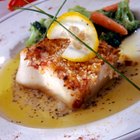
How to Pan Sear Sea Bass
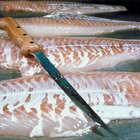
How to Grill a Cod Fish

How to Bake Boneless Skinless Tilapia

How to Cook Whole Butterfish
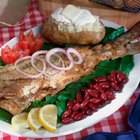
How to Bake a Whole Cat Fish

Do You Cook Fish Skin-Side Down?
How to Cook a Turbot in the Oven
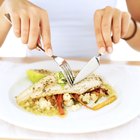
How to Cook Grunt Fish

How to Pan-Sear Swordfish

How to Make Baked Haddock in a Foil ...

Cooking Frozen Swai Fillets
How to Cook Bone-in Tilapia

How to Fillet a Goliath Grouper

How to Bake Mullet

How to Cook Parrotfish
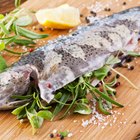
How to Cook a Whole Rainbow Trout
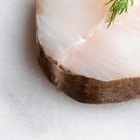
How to BBQ Halibut With Foil

How to Grill a Trout Fillet
How to Cook Grouper in the Oven
References
Writer Bio
Irena Eaves began writing professionally in 2005. She has been published on several websites including RedPlum, CollegeDegreeReport.com and AutoInsuranceTips.com. Eaves holds a Bachelor of Science in journalism from Boston University.
Photo Credits
Hemera Technologies/Photos.com/Getty Images